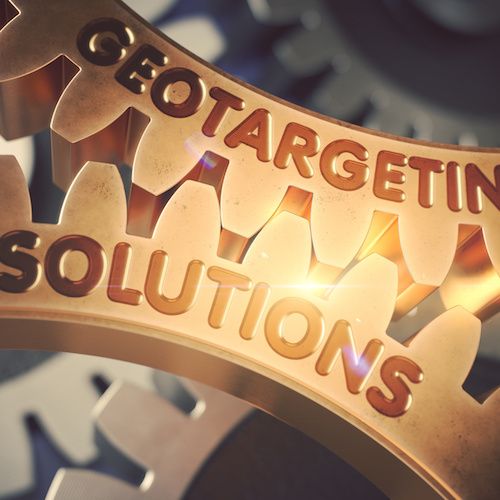As medical and legal practitioners choose to invest in growing their search rankings for non-branded terms (e.g., dentists, personal injury lawyers), [it’s important to] consider four main factors including on-page optimization, technical SEO, link building, and content marketing that directly impact search rankings and search traffic.

These areas of execution for SEO are vital to increasing your rankings in search engines, but many companies neglect the paid aspect of digital advertising and its impact on rankings. Lower-funnel searchers actively searching are the best customers to get your brand in front of.
It’s the equivalent of placing a retail store that sells candy in front of pedestrians who only eat candy. But what about the other people who don’t walk by your store, yet still send out the signal that they love candy? How can you drive those people to your store or to your brand?
Time and time again, we’ve seen that beautiful things happen when brands and companies raise their name profile through display advertising and geofencing marketing.
We’ve witnessed companies who use geofencing marketing to target their prime customers see their brand awareness and consideration increase over time.
People will begin searching for your brand online and even visiting your website directly more often. To understand the impact of display advertising on branded and non-branded search queries, we first need to discuss “what is geofencing.”
What Is Geofencing Marketing?
Through the use of mobile GPS and App technology, lawyers and medical practices can create a virtual “Geo-Fence” around a target building or area.
When individuals with a smartphone enter the designated area (with the locations services of their smartphone device turned on), advertisers can capture their mobile device ID and use that information to target them on their mobile phone with advertising while they are within the “fence,” and for up to 30 days after they leave the fenced area.
Those users will see those ads when they are using mobile apps such as Yahoo, ESPN App, PGA Tour App, Angry Birds, Weather.com, etc. They will also see the advertiser’s ads when they visit mobile enabled websites that accept advertising.
The Practical Use Cases of Geofencing
Geofencing marketing allows medical practices and lawyers to microtarget their core customers in ways other channels do not allow.
Compared to wasted spend through radius targeting of one mile or greater, advertisers can achieve 97% more reach through targeted display and geofencing. Consider some of the many practical uses of geofencing:
- Family dentists who want to serve ads to the patients that walk inside of their competitor locations can geofence all the competitors within a five-mile radius of their main practice offices.
- Family lawyers who want to geofence a few nearby courthouses to raise their name profile and reach people coming in and out of the courthouse.
- Orthopedic Hospital Systems that need more patients geofence parks, sporting fields, nearby competitor hospitals nearby, urgent care facilities, and high schools.
Non-branded Search Versus Branded Search
With geofencing marketing, you are putting display advertising in overdrive because you are targeting your core audience instead of wasted areas of geographic targeting.
The ancillary benefits of geofencing include increased brand awareness, increased consideration, and an increase in branded searches, because more people have seen your ad enough times to search for your brand online.
A study by Internet Marketing Ninjas found that branded queries have higher Click-Through Rate (CTR) on the first half of the first page of Google. Surprisingly, results 7 and 8 also have a high CTR. Non-branded queries have a steady decline in CTR.
The average CTR for the first position is 19.30 percent, whereas the second position CTR is nearly half of that for the first position—10.57 percent. Overall, there’s an incentive to drive awareness and consideration for people who express an intent or need for a specific medical or legal practice.
Impact of Geofencing on Branded Queries
This Moz post shows a strong correlation between brand awareness and its influence on search rankings. The inherent benefit to display advertising and in particular, geofencing marketing, is that more people will become aware of your brand.
If you have a compelling offer and the individual’s customer journey warrants the continued need for your medical or legal services, there is a reasonable chance that individual will go directly into Google, Yahoo, or Bing to search for your brand.
It’s important to note that the average CTR for programmatic display advertising and geofencing is 0.1%. What this means is that for every 1000 impressions, you will get one click to your website.
The hope is that the other 99.9% of impressions left an impression on the consumers, who will later search for you when your product or service is needed.
Consider billboard advertisers. When you drive by a billboard, you cannot click on a billboard. Rarely do you remember the brand name, let alone the website where you can go visit the brand. But, when you do remember the brand name, you do in fact search for it in your desired search engine.
Both Geofencing & SEO Can…and Should Live Together
SEO and geofencing can have extensive impacts medical and legal practices. Geofencing helps with those top of funnel individuals who have raised their hand indicating intent (I hurt my knee and am at the ER center).
And when you have a sound SEO strategy and you are ranking for a multitude of keywords, those same people who saw your ads from your geofencing advertising activities will be more likely to visit your search listing, whether they searched for branded or non-branded keywords.

Justin Croxton is the Managing Partner at Propellant Media, LLC, a digital marketing and media solutions provider, offering geofencing marketing and programmatic display solutions to auto dealerships, agencies, and companies. Visit us at www.propellant.media.

